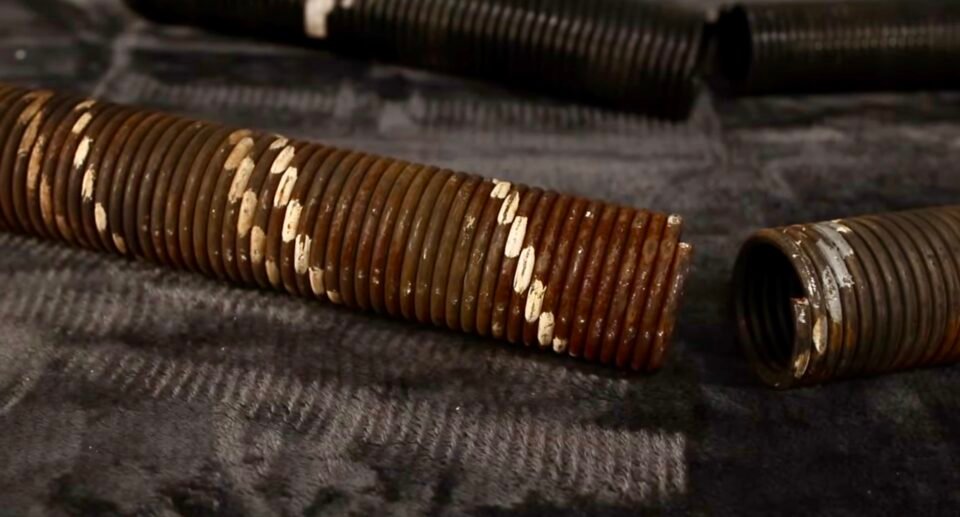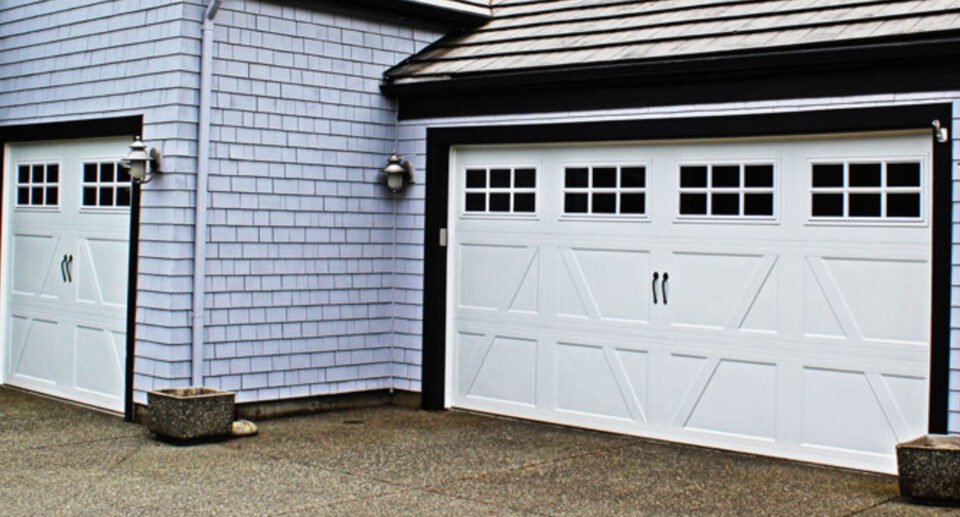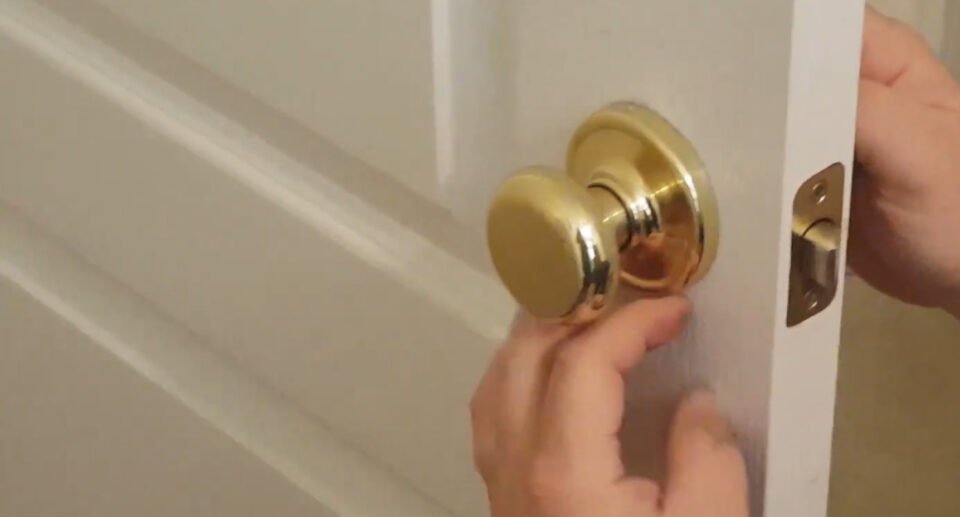Garage Door Broken Spring: All You Need to Know With Videos

Table of Contents
ToggleGarage doors are an essential part of any modern home. They provide convenient access to your garage and protect your vehicle from the elements. However, like any mechanical system, garage doors are prone to wear and tear over time. One of the most common issues that homeowners face with their garage doors is a broken spring.
Understanding Garage Door Springs
Garage door springs are essential components that help to lift and lower the door smoothly. There are two types of garage door springs: torsion springs and extension springs.
Torsion springs are located above the door and are wound tightly to provide the necessary tension to lift the door. Meanwhile, extension springs are located on either side of the door and stretch to provide the necessary force to lift the door.
Identifying a Broken Spring
A broken garage door spring is a serious issue that requires immediate attention. Signs of a broken spring include difficulty opening or closing the door, a loud bang or popping sound when the door is operated, or an uneven door that appears to be tilted. If you suspect that your garage door spring is broken, it is important to stop using the door immediately and call a professional for repairs.
Key Takeaways
- Garage door springs are essential components that help to lift and lower the door smoothly.
- Signs of a broken spring include difficulty opening or closing the door, a loud bang or popping sound when the door is operated, or an uneven door that appears to be tilted.
- If you suspect that your garage door spring is broken, it is important to stop using the door immediately and call a professional for repairs.
Understanding Garage Door Springs
Garage door springs are an essential component of any garage door system. They are responsible for lifting and lowering the door, and they play a crucial role in ensuring the door operates smoothly and safely.
In this section, we will explore the different types of garage door springs, their mechanics, and materials and manufacturing.
Types of Springs
There are two main types of garage door springs: torsion springs and extension springs. Torsion springs are mounted above the garage door, while extension springs are mounted on either side of the door. Torsion springs are more commonly used in modern garage door systems due to their durability and safety.
Spring Mechanics
Garage door springs work by using tension to lift and lower the door. When the door is closed, the springs are under immense tension. As the door is opened, the tension in the springs is released, allowing the door to move upward. When the door is closed again, the springs contract, pulling the door back down.
Torsion springs store energy by coiling tightly as the door closes, while extension springs stretch and contract as the door moves up and down. Torsion springs are generally considered to be safer than extension springs, as they are less likely to break or snap.
Materials and Manufacturing
Garage door springs are typically made from high-quality steel wire. The wire is wound tightly to create the spring, and then it is heat-treated to increase its strength and durability. The manufacturing process is crucial to ensuring that the springs are safe and reliable.
Identifying a Broken Spring
Garage doors are heavy and require a lot of force to open and close. The springs are responsible for providing this force, and when they break, it can be dangerous to operate the garage door. Here are some ways to identify a broken spring:
Visual Inspection
One of the easiest ways to identify a broken spring is to visually inspect the garage door. Torsion springs are located above the door and extension springs are located above the tracks on either side of the door. Look for any signs of rust or wear and tear. If the spring is broken, it will be obvious as the door will not open or close properly.
Signs of Wear and Tear
Another way to identify a broken spring is to look for signs of wear and tear. Springs are under a lot of tension and over time, they can become worn out. Look for any signs of stretching or sagging. If the spring is worn out, it may not be able to provide enough force to open or close the door.
It is important to note that garage door springs can be dangerous to handle. If you suspect that your garage door spring is broken or worn out, it is best to contact a professional to inspect and replace the spring. Attempting to replace a spring on your own can result in serious injury or damage to your garage door.
Safety Precautions
Garage door springs are under high tension and can be dangerous to handle. Therefore, it is essential to take proper safety precautions while repairing a broken garage door spring. This section covers the safety measures that one should take before and while repairing a garage door spring.
Before You Begin
Before starting the repair process, it is important to disconnect the power source to prevent the garage door from accidentally opening or closing.
One should also ensure that the door is locked in place using locking pliers or c-clamps to prevent it from falling while working on it. Wearing gloves and eye protection is also recommended to protect oneself from injury.
While Repairing
While repairing a garage door spring, one should always use a safety cable to prevent the spring from flying off in case it breaks.
It is also important to use the right tools and equipment and follow the manufacturer’s instructions carefully. Avoid using makeshift tools or improvising as it can be dangerous and cause injury.
Repair and Replacement Process
Gathering the Right Tools
Before beginning the repair or replacement process of a broken garage door spring, it is important to gather the right tools.
These tools include, but are not limited to, winding bars, vise grips, wrenches, and locking pliers.
It is crucial to ensure that the tools are of the right size and are in good condition to avoid any accidents during the process.
Removing the Broken Spring
The first step in the repair or replacement process is to remove the broken spring.
This can be done by clamping the door in place using locking pliers and then releasing the tension on the spring using winding bars.
Once the tension is released, the spring can be removed by loosening the bolts on the bracket that holds the spring in place.
Installing the New Spring
After removing the broken spring, the new spring can be installed.
It is important to ensure that the replacement spring is of the correct size, type, and color-coded.
The spring should be wound in the same direction as the old one and should be installed in the same position as the old one.
The winding cone should be tightened using winding bars and the tension should be adjusted to ensure that the door operates smoothly.
In addition to the spring, it is also important to inspect the cables, cable drum, center bearing, and pulley for any signs of wear and tear. If any of these parts are damaged, they should be replaced along with the broken spring.
Adjusting Spring Tension
Adjusting the tension of garage door springs is an important task that should be done carefully.
It is recommended that homeowners hire a professional to do this job, but it can also be done by someone with the right knowledge and tools.
Torsion Spring Adjustment
Torsion springs are located above the garage door and are wound tightly when the door is closed.
To adjust the tension of a torsion spring, a winding bar is inserted into one of the holes in the winding cone.
The winding bar is then used to turn the cone, which tightens or loosens the spring.
Before adjusting the torsion spring, it is important to release the tension in the spring.
This can be done by using two winding bars to unwind the spring until it is completely unwound. Once the tension is released, the spring can be adjusted.
Extension Spring Adjustment
Extension springs are located on either side of the garage door and are stretched when the door is closed.
To adjust the tension of an extension spring, the pulley at the end of the spring must be moved to a different hole on the track. This will increase or decrease the tension of the spring.
Before adjusting the extension spring, it is important to disconnect the garage door opener to ensure it won’t interfere with the adjustment.
Use winding bars to secure the tension in the springs. Always wear safety goggles and gloves.
Maintenance and Care
Regular maintenance checks and proper care of a garage door can help extend the life of its components, including the springs. Here are some tips for maintaining and caring for your garage door:
Regular Maintenance Checks
Performing regular maintenance checks on your garage door can help identify potential issues before they become major problems.
Inspect the springs for signs of wear and tear, such as cracks or gaps in the coils.
Check the cables for fraying or damage, and ensure that they are properly attached to the door and the track.
Look for signs of rust or corrosion on the hardware and lubricate any moving parts, such as hinges and rollers.
Lubrication and Cleaning
Proper lubrication and cleaning can help prevent wear and tear on the garage door components, including the springs.
Use a high-quality garage door lubricant to lubricate the springs, hinges, rollers, and other moving parts. This will help reduce friction and wear on the components.
Be sure to clean the garage door tracks and remove any debris or dirt that may be present. This will help ensure that the door operates smoothly and efficiently.
It is recommended to have a professional garage door tune-up service performed at least once a year.
During this service, a technician will inspect all of the components of the garage door and make any necessary adjustments or repairs. This can help prevent major issues from occurring and extend the service life of the garage door.
Troubleshooting Common Issues
Garage door springs are an essential component of any garage door system. When they break, it can cause a lot of inconvenience and hassle for homeowners. Troubleshooting common issues can help homeowners identify and fix problems before they become major issues.
Door Opener Problems
One common issue that homeowners face with garage doors is problems with the door opener.
If the door opener is not functioning properly, it can cause the garage door to become unresponsive or not open at all. In some cases, the door opener may need to be replaced.
To troubleshoot door opener problems, homeowners should check the power supply to the opener and ensure that it is plugged in and turned on.
They should also check the batteries in the remote control and replace them if necessary. If the opener is still not functioning properly, it may need to be replaced.
Unbalanced Doors
Another common issue that homeowners face with garage doors is unbalanced doors. When a garage door is unbalanced, it can cause the door to become heavy and difficult to open and close.
This can put a strain on the garage door opener and cause it to malfunction.
To troubleshoot unbalanced doors, homeowners should check the balance of the garage door. They can do this by disconnecting the opener and manually opening and closing the door.
If the door is heavy or difficult to open and close, it may be unbalanced and need to be adjusted.
Homeowners should also check the garage door cables for signs of wear and tear. If the cables are frayed or damaged, they may need to be replaced.
It is important to note that garage door cables should only be replaced by a professional garage door technician.
Professional vs. DIY Repairs
When dealing with a broken garage door spring, homeowners are often faced with the decision of whether to attempt a DIY repair or call in a professional. While DIY repairs may seem like a cost-effective solution, it is important to consider the potential risks and benefits of each option.
When to Call a Professional
Calling in a professional garage door repair service may be the best option in certain situations. For example, if the homeowner lacks the necessary tools, experience, or knowledge to perform the repair, it is best to leave it to the professionals.
Attempting a DIY repair without the proper tools or experience can lead to further damage or injury.
Additionally, if the garage door springs are under high tension, attempting to repair them without the proper training and equipment can be extremely dangerous.
Professionals have the knowledge and experience to safely repair or replace broken garage door springs.
DIY Considerations
While DIY repairs may be tempting, it is important to consider the potential risks and drawbacks. DIY repairs may provide a temporary fix, but without professional assessment, underlying problems can go undetected, leading to recurring issues or more extensive damage in the future.
Homeowners should also consider the cost of DIY repairs. While it may seem cost-effective to perform the repair themselves, purchasing the necessary tools and equipment can quickly add up.
Additionally, if the repair is not done correctly, it may end up costing more in the long run to fix the additional damage caused by the DIY repair.
Cost Considerations
Estimating Repair Costs
When it comes to garage door broken spring repair, the cost can vary depending on a few factors. The average cost for a garage door spring replacement is around $250, according to various sources.
However, it’s important to note that this is simply an average, and costs can range from as low as $10 for a single spring replacement to as high as $500 for more complex repairs.
The cost of replacing a garage door spring can depend on several factors, including the type of spring, the size of the door, and the type of repair needed. Additionally, the cost of labor can vary depending on the service provider and the location of the repair.
Factors Affecting Price
There are several factors that can affect the cost of garage door spring replacement, including:
Type of spring: There are two main types of garage door springs – torsion and extension. Torsion springs are generally more expensive than extension springs due to their complexity and durability.
Size of the door: The size of the garage door can also impact the cost of repair. Larger doors require larger springs, which can be more expensive.
Type of repair needed: The type of repair needed can also impact the cost. If only one spring needs to be replaced, the cost will be lower than if both springs need to be replaced.
Labor costs: The cost of labor can vary depending on the service provider and the location of the repair. It’s important to get quotes from multiple providers to ensure that you are getting a fair price.
It’s important to note that the cost of garage door spring replacement can vary between commercial and residential properties. Commercial properties may require more complex repairs, which can increase the cost of labor and parts.
Additionally, the manufacturer of the garage door and the spring can also impact the cost. It’s important to do your research and choose a reputable manufacturer to ensure that you are getting a quality product.
Frequently Asked Questions
The cost of replacing a broken garage door spring can vary depending on the type of spring, the size of the door, and the location of your home. Generally, the cost can range from $150 to $350 for a single spring replacement.
It is recommended to get a quote from a professional repair service to get an accurate estimate.
If your garage door spring breaks, it is important to discontinue using the door and call a professional repair service immediately.
Attempting to fix the spring on your own can be dangerous and cause further damage to the door or even harm to yourself.
While it is possible to replace a garage door spring on your own, it is not recommended unless you have experience and knowledge in garage door repair. The process can be dangerous and requires specialized tools.
It is recommended to contact a professional repair service for safe and efficient repair.
No, a garage door cannot operate with a broken spring. The spring is responsible for lifting the weight of the door, and without it, the door will not open or close properly.
Attempting to operate the door with a broken spring can cause further damage to the door or harm to yourself.
Some signs that a garage door spring may be broken include difficulty opening or closing the door, a loud bang or noise when the door is operated, and visible damage or wear on the spring itself.
If you notice any of these signs, it is important to contact a professional repair service for inspection and repair.
You can find professional repair services for a broken garage door spring through a quick internet search or recommendations from friends and family. Make sure to choose a licensed and insured repair service with experience in garage door repair.

Hello, I’m Keith Jones. I’m the author and head of content here of door and window guide. I’ve been in the window and door industry for over 10 years in the UK and North America. I’ve had quite a few roles during my career mainly in Worldwide sales. I’m now semi retired so I thought I’d put my knowledge to good use educating people about all they might need to know about door and window related topics.






